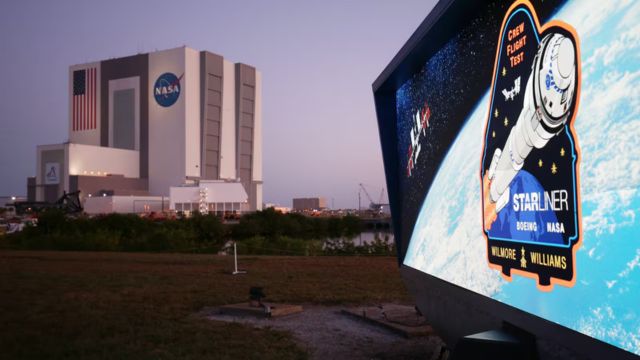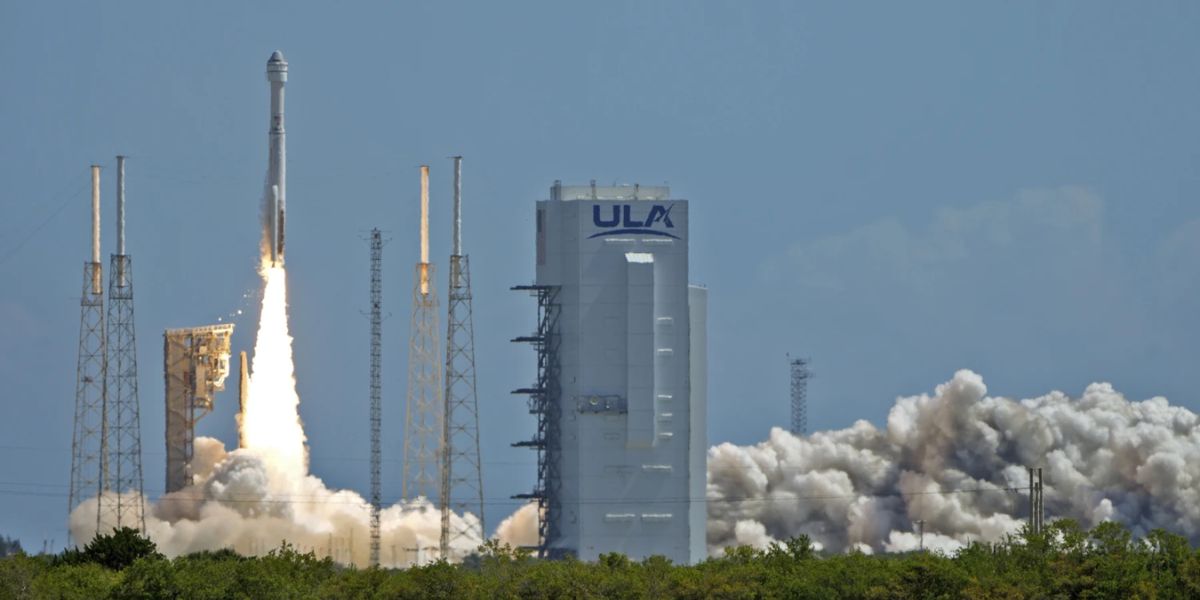Historic Milestone: Boeing’s Starliner Completes First Astronaut-crewed Test Flight
DEBARYLIFE – Following multiple delays, Boeing’s Starliner capsule made its first space voyage with astronauts on board to reach the International Space Station (ISS) on Wednesday.
From the Cape Canaveral Space Force Station in Cape Canaveral, Florida, the rocket was launched at 10:52 a.m. ET.
The weather for the launch was 90% good. NASA Communications’ Derrol Nail stated in a webcast that the crew had been monitoring the cumulus cloud forecast because if the rocket passes through them, it may produce a lightning strike of its own.
MORE: A blocked valve caused the first astronaut-crewed Boeing Starliner flight to be canceled.
The rocket broke apart from the spacecraft around fifteen minutes after launch, enabling Starliner to continue flying on its own. Starliner attained stable orbit with success, according to Boeing Space at 11:24 a.m. ET.
The Starliner is intended to have a crew of seven, but for the “test drive” launch, NASA astronauts Barry “Butch” Wilmore, 61, a former captain of the United States Navy, will be leading the trip, and Sunita Williams, 58, a former service member of the Navy, will be driving it.
In an indication that the launch is ready to proceed, a crew from United Launch Alliance (ULA), which builds and manages the rockets that drive spacecraft into orbit, started adding cryogenic propellant to the rocket before the scheduled liftoff early this morning.
Around 8:00 a.m. ET, Wilmore, and Williams entered the capsule, took their seats, and carried out several checks, including suit and communications checks, according to a Boeing Space post on X.
During its broadcast on Wednesday, NASA announced that this voyage will be Wilmore’s third mission to the ISS. NASA claims that Williams, who is currently on her third space mission, will also be the first female astronaut to go on an orbiting spacecraft during a test flight.

NASA states that the crew of Starliner will test various flight objectives, including equipment checks, throughout the approximately 24-hour travel to the International Space Station (ISS).
Even though Starline can function independently, Wilmore and Williams will occasionally pilot it manually to demonstrate that it can, according to Boeing Space.
MORE: After five months, NASA’s Voyager 1 is returning readable data to Earth.
It is anticipated that Williams and Wilmore will stay on the ISS for a week, during which they will assess the spaceship and its systems. The spacecraft will land in the western United States when it re-enters the atmosphere with its parachutes and airbags deployed.
It happens following multiple delays to Starliner’s launch. A malfunction with an oxygen valve on the ULA rocket forced the cancellation of the crewed flight test, which was originally slated for May 6.
The service module, which houses the sensors and support equipment needed to run a spacecraft, had a tiny helium leak that was found, postponing the originally scheduled launch date of May 25.
A second launch that was scheduled for June 2 was canceled just before it was supposed to happen “because the ground launch sequencer computer did not load into the correct operational configuration after proceeding into terminal count.”
NASA states that the crew of Starliner will test various flight objectives, including equipment checks, throughout the approximately 24-hour travel to the International Space Station (ISS).
In an indication that the launch is ready to proceed, a crew from United Launch Alliance (ULA), which builds and manages the rockets that drive spacecraft into orbit, started adding cryogenic propellant to the rocket before the scheduled liftoff early this morning.
Around 8:00 a.m. ET, Wilmore, and Williams entered the capsule, took their seats, and carried out several checks, including suit and communications checks, according to a Boeing Space post on X.
During its broadcast on Wednesday, NASA announced that this voyage will be Wilmore’s third mission to the ISS. NASA claims that Williams, who is currently on her third space mission, will also be the first female astronaut to go on an orbiting spacecraft during a test flight.
NASA states that the crew of Starliner will test various flight objectives, including equipment checks, throughout the approximately 24-hour travel to the International Space Station (ISS).
Even though Starline can function independently, Wilmore and Williams will occasionally pilot it manually to demonstrate that it can, according to Boeing Space.
MORE: After five months, NASA’s Voyager 1 is returning readable data to Earth.
It is anticipated that Williams and Wilmore will stay on the ISS for a week, during which they will assess the spaceship and its systems. The spacecraft will land in the western United States when it re-enters the atmosphere with its parachutes and airbags deployed.
It happens following multiple delays to Starliner’s launch. A malfunction with an oxygen valve on the ULA rocket forced the cancellation of the crewed flight test, which was originally slated for May 6.
The service module, which houses the sensors and support equipment needed to run a spacecraft, had a tiny helium leak that was found, postponing the originally scheduled launch date of May 25.
A second launch that was scheduled for June 2 was canceled just before it was supposed to happen “because the ground launch sequencer computer did not load into the correct operational configuration after proceeding into terminal count.”
NASA states that the crew of Starliner will test various flight objectives, including equipment checks, throughout the approximately 24-hour travel to the International Space Station (ISS).











